Related Research Articles

Sir Charles Spencer Chaplin Jr. was an English comic actor, filmmaker, and composer who rose to fame in the era of silent film. He became a worldwide icon through his screen persona, the Tramp, and is considered one of the film industry's most important figures. His career spanned more than 75 years, from childhood in the Victorian era until a year before his death in 1977, and encompassed both adulation and controversy.
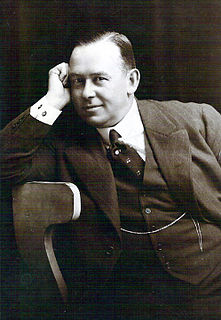
Frederick John Westcott, best known by his stage name Fred Karno, was an English theatre impresario of the British music hall. As a comedian of slapstick he is credited with popularising the custard-pie-in-the-face gag. During the 1890s, in order to circumvent stage censorship, Karno developed a form of sketch comedy without dialogue.
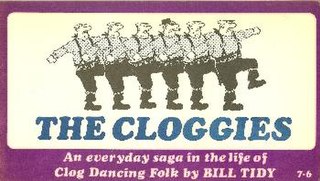
The Cloggies, an Everyday Saga in the Life of Clog Dancing Folk, was a long-running cartoon by Bill Tidy that ran in the satirical magazine Private Eye from 1967 to 1981, and later in The Listener from 1985 to 1986. It gently satirised northern English male culture, and introduced a shocked nation to the scurrilous delights of Lancashire clog-dancing. This particular variation of the art involved two teams dancing towards each other in formation, followed by each attempting to cripple their opponents with gracefully executed knee and foot moves. Thus the Forward Sir Percy, a synchronized low-level knee attack, the Double Arkwright wi' Ankle Lever, the Heckmondwycke with Reverse Spin and the ever controversial Triple Arkwright. Other routines included the Half Arkwright with Groin Action, the Erotic Elbow Drive and the match-winning Flying Arkwright, performed to cries of, “Keep them knees stylish!”

Limelight is a 1952 American comedy-drama film written, produced, directed by, and starring Charlie Chaplin, based on a novella by Chaplin titled Footlights. The score was composed by Chaplin and arranged by Ray Rasch.

Patricia Claire Bloom is an English actress. She is known for leading roles in plays such as A Streetcar Named Desire,A Doll's House, and Long Day's Journey into Night, and has starred in nearly sixty films.

Little Tramp is a musical with a book by David Pomeranz and Steven David Horwich and music and lyrics by David Pomeranz.

Christy's Minstrels, sometimes referred to as the Christy Minstrels, were a blackface group formed by Edwin Pearce Christy, a well-known ballad singer, in 1843, in Buffalo, New York. They were instrumental in the solidification of the minstrel show into a fixed three-act form. The troupe also invented or popularized "the line", the structured grouping that constituted the first act of the standardized three-act minstrel show, with the interlocutor in the middle and "Mr. Tambo" and "Mr. Bones" on the ends.
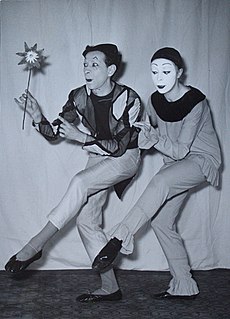
A mime artist, or simply mime, is a person who uses mime as a theatrical medium or as a performance art. Miming involves acting out a story through body motions, without the use of speech. In earlier times, in English, such a performer would typically be referred to as a mummer. Miming is distinguished from silent comedy, in which the artist is a character in a film or skit without sound.
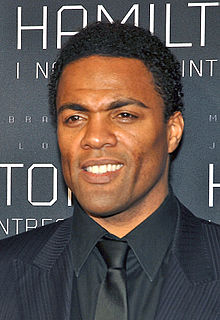
Raymond Fearon is an English actor. He played garage mechanic Nathan Harding on ITV's long-running soap opera Coronation Street and voiced the phoenix Fawkes in the Wizarding World film series Harry Potter and Fantastic Beasts.
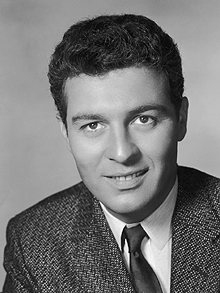
Sydney Earl Chaplin was an American actor. He was the second son of Charlie Chaplin and Lita Grey. One of his major roles was in his father's film Limelight (1952). In theater, Chaplin won the Tony Award for Best Featured Actor in a Musical for his 1957 performance in Bells Are Ringing.
Sam Hague was a British blackface minstrel dancer and troupe owner. He was a pioneering white owner of a minstrel troupe composed of black members, and the success he saw with this troupe inspired many other white minstrel managers to tour with black companies.
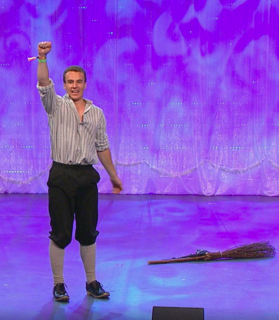
Clog dancing is a form of step dance characterised by the wearing of inflexible, wooden soled clogs. Clog dancing developed into differing intricate forms both in Wales and also in the North of England. Welsh clog dancing mainly originates from various slate mines where workers would compete against each other during work breaks. Northern English traditional clog dancing originates from Lancashire, Yorkshire, County Durham, Northumberland and the Lake District.
George Stephenson "Onkus" Wallace, was an Australian comedian, actor, vaudevillian and radio personality. During the early to mid-20th century, he was one of the most famous and successful Australian comedians on both stage and screen, with screen, song and revue sketch writing amongst his repertoire. Wallace was a small tubby man with goggle eyes, a mobile face and croaky voice who appeared in trademark baggy trousers, checkered shirt and felt hat. His career as one of Australia's most popular comedians spanned four decades from the 1920s to 1960 and encompassed stage, radio and film entertainment. Ken G. Hall, who directed him in two films, wrote in his autobiography that George Wallace was the finest Australian comedian he had known.

Harry Arthur Saintsbury, usually called H. A. Saintsbury, was an English actor and playwright. A leading man, he became well known for his stage interpretation of Sherlock Holmes, was an early mentor of Charlie Chaplin, and is considered an authority on the work of Sir Henry Irving.

Edgley International is a theatre and concert promotions company from Australia, first started in the 1930s and run by several generations.

The Britannia Coconut Dancers or Nutters are a troupe of Lancastrian clog dancers who perform every Easter in Bacup, dancing 7 miles (11 km) across the town and surrounding areas after blackening their faces. There are eight dancers and a whipper-in, who controls the proceedings. As the application of blackface is considered offensive and racist, the group is controversial.

Charles Spencer Chaplin Sr. was an English music hall entertainer. He achieved considerable success in the 1890s, and was the father of the actor and filmmaker Sir Charlie Chaplin.
Ernest G. Roy was a British film producer who was managing director of Kay Laboratories, Kay Carlton Hill Studios Ltd and Nettlefold Studios.

Hannah Harriet Pedlingham Chaplin, also known by the stage name Lily Harley, was an English actress, singer and dancer who performed in British music halls from the age of 16. Chaplin was the mother of Charlie Chaplin and his two half-brothers, the actor Sydney Chaplin and the film director Wheeler Dryden and grandmother of musician Spencer Dryden. As a result of mental illness, now thought to have been caused by syphilis, she was unable to continue performing from the mid-1890s. In 1921, she was relocated by her son Charlie to California, where she was cared for in a house in the San Fernando Valley until her death in August 1928.
Josie Woods was a Black British dancer, choreographer and activist.
References
- 1 2 "Clog dancing kid who became a global superstar". www.lep.co.uk. 3 March 2017. Retrieved 13 February 2021.
{{cite web}}: CS1 maint: url-status (link) - ↑ "Bring on those Wonderful Dames!". It's Behind You. Retrieved 11 March 2009.
- ↑ "Manchunian Film Studio - The Stars". it's a hot'un. Retrieved 11 March 2009.
- ↑ Rand, Lisa. "The global music star from Liverpool you've probably never heard of". Liverpool Echo. Retrieved 29 June 2021.
- ↑ Wilmer, Val (2 August 2008). "Josie Woods". The Guardian. Retrieved 21 November 2022.
- ↑ Marriot, A. J. (2005). Chaplin: stage by stage. Hitchin: Marriot. ISBN 978-0-9521308-1-9.